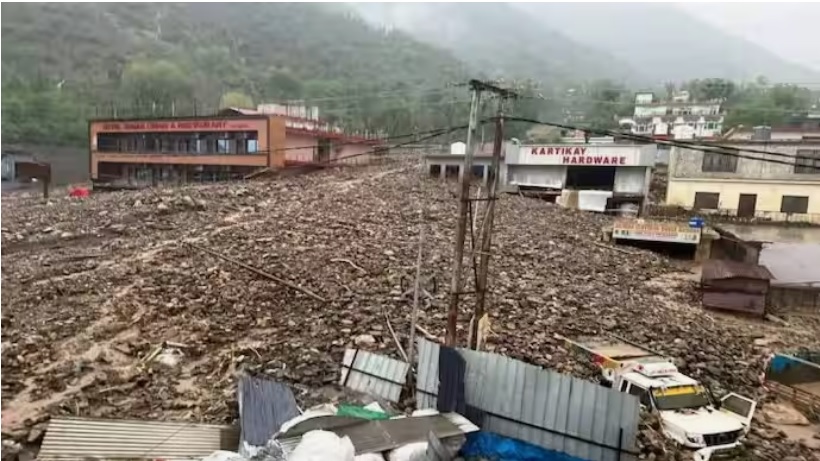Ramban Devastated by Flash Floods: Lives Lost, Rescue Operations Underway
Ramban 20 April 2025: In a tragic turn of events, massive flash floods triggered by relentless heavy rainfall wreaked havoc in Ramban district, leaving three people dead, displacing families, and causing widespread destruction. The extreme weather has paralyzed normal life in the region, with over 100 people rescued from flood-hit areas amid ongoing rescue and relief efforts. Torrential rains have also led to landslides, severely impacting the vital Srinagar-Jammu National Highway, cutting off Kashmir from the rest of the country.
This calamity has underscored the region’s vulnerability to extreme weather events, raising alarms about the urgent need for preparedness and climate-resilient infrastructure.
Flash Floods: The Day of Destruction
The flash floods caught residents off guard, inundating homes, roads, and agricultural fields. The affected areas of Ramban faced the brunt of nature’s fury as gushing waters swept through villages, damaging homes and displacing families.
- Fatalities and Survivors: Tragically, three lives were lost in the flood, and several others suffered injuries while attempting to flee their inundated homes. Rescue teams managed to save over 100 stranded individuals, many of whom were vulnerable children and elderly residents.
- Economic Losses: Farmlands and livestock have been washed away, leaving the affected families on the brink of financial crisis. For the farming community, this represents not just monetary loss but emotional devastation.
Highway Woes: Srinagar-Jammu Road Severed
The Srinagar-Jammu National Highway, Kashmir’s essential lifeline for supplies and transport, has been heavily affected by the torrential rains. Landslides triggered by the relentless downpour have washed away significant portions of the highway, leaving hundreds of vehicles stranded.
- Transport Paralysis: With road closures in critical stretches, movement of essential goods, including food and medicines, has been halted.
- Stranded Travelers: Families, truck drivers, and laborers trapped on the highway have been shifted to temporary shelters by authorities.
Heavy Rain, Snow, and the Double Blow
While the plains battled torrential rains, Kashmir’s higher reaches experienced a fresh bout of heavy snowfall. Areas like Sonamarg, Gulmarg, and Pahalgam were draped in a thick white blanket, disrupting power supply and cutting off many remote villages.
- Travel Disruptions: Snowfall has halted vehicular movement along the Mughal Road and other critical routes connecting Jammu with the Valley.
- Farmer Concerns: For orchardists and farmers, the adverse weather threatens the crops that survived earlier storms, adding to their woes.
Rescue and Relief Operations Underway
The district administration, along with disaster relief teams, has launched extensive rescue operations in Ramban and adjoining areas to evacuate stranded residents.
- State Disaster Response Force (SDRF) and Army Teams: These units have been deployed to affected zones to assist with rescues and provide relief materials.
- Temporary Shelters: Displaced families have been accommodated in makeshift shelters equipped with food, clothing, and medical assistance.
Climate Concerns: A Growing Threat
The flash flood in Ramban is yet another stark reminder of the growing intensity of extreme weather events in Kashmir, linked to climate change. The Himalayan region, with its fragile ecology, is experiencing unpredictable shifts in weather patterns, leading to frequent floods, landslides, and snowstorms.
Key Recommendations
To mitigate the impact of such disasters in the future, experts suggest:
- Disaster-Resilient Infrastructure: Strengthening river embankments and modernizing roadways to withstand extreme weather conditions.
- Improved Early Warning Systems: Deploying state-of-the-art technologies to ensure timely alerts to vulnerable areas.
- Community Awareness: Conducting safety drills and awareness campaigns to prepare residents for such emergencies.



